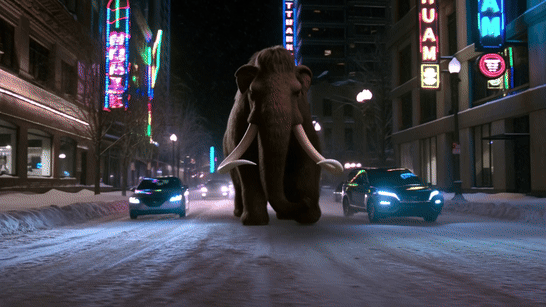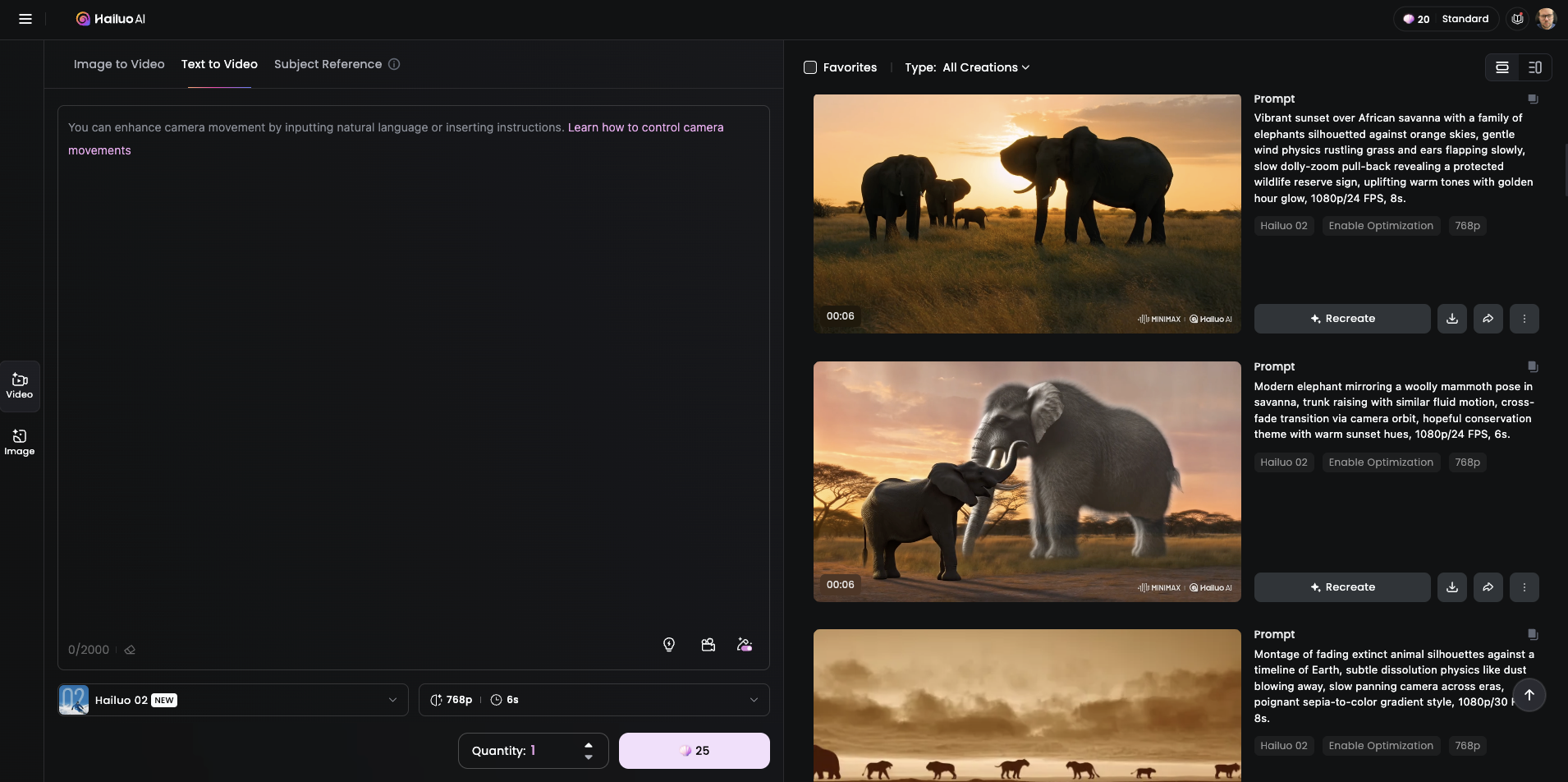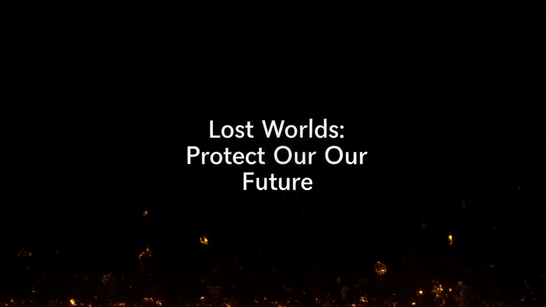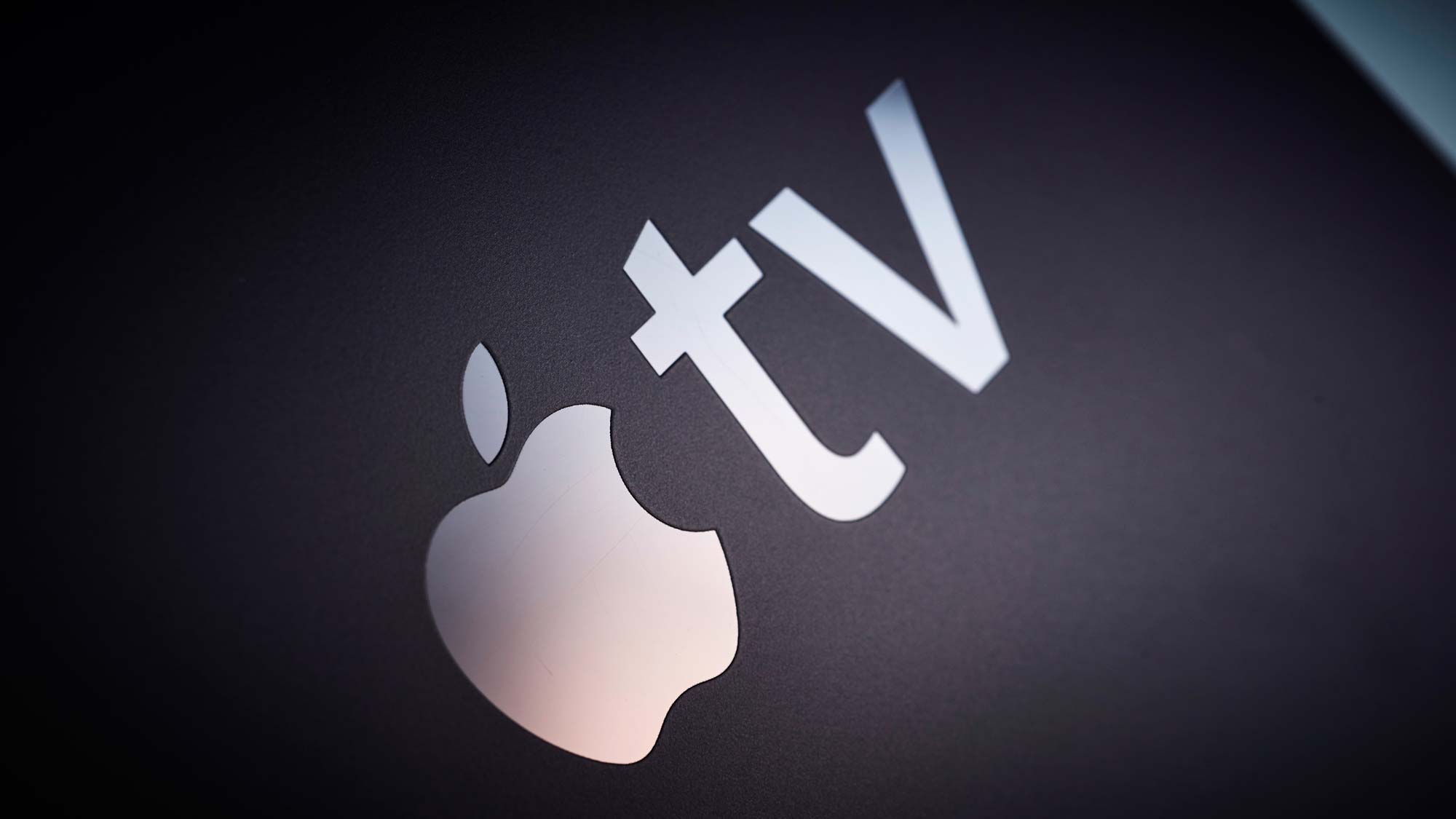I used AI to resurrect extinct animals in a documentary — the results blew my mind
Accurate physics and visual rendering with MiniMax 02

MiniMax 02 from Chinese AI startup Hailuo is one of the few models to match Google’s Veo 3 in terms of physics and visual realism. It's able to create stunning real-world scenes from simple or complex prompts and is a massive upgrade on the previous generation.
It doesn’t have the audio capabilities of Veo 3 but you can create video from image or text and use the consistent character feature to ensure consistency across videos. There are 6 or 10 second video generation options and 720p or 1080p resolutions.
To put the latest generation AI video model to the test I came up with a concept — a wildlife documentary about wildlife that no longer exists. The extinct species such as the Dodo, sabertooth tigers and woolly mammoths — and then tie it to species today.
Creating the story
The first task was to come up with the story. From threat of annihilation through to what they might be like if they survived to the modern era. It isn’t particularly clever, some scenes don’t make much sense but it looks good. I then turned the story into prompts - just simple ideas.
I turned to Grok 4 to help me work out the story. I gave it the idea I’d come up with and asked it to help me plot out a series of videos to create a one to two minute documentary. Using AI to help prompt AI is a practical solution, it can create structure and add key terms such as camera type or motion to otherwise simple sentences.
Grok 4 is particularly useful as it instantly went online, found prompting guides for MiniMax 02 and tailored its responses based on best practice. It came up with 16 prompts, each resulting in six seconds of video.
Creating the prompts
It started with the concept: “Document the behaviors and environments of extinct species as if captured on film, discussing evolution and extinction causes. Include ‘what if’ scenarios like a mammoth in modern times for a speculative twist.”
Get instant access to breaking news, the hottest reviews, great deals and helpful tips.
Next was working out the specific scenes I'd need to tell the story and craft prompts that played to MiniMax strength. For example MiniMax 02 is great for realistic physics such as fur movement and collisions, as well as camera controls and texture details.
For example, I decided to open with a scene called The Dawn of Extinction. The goal is to set the stage with a dramatic overview of prehistoric Earth. First prompt: "Panoramic view of a lush prehistoric valley teeming with diverse extinct animals like dodos and saber-toothed tigers grazing peacefully, subtle wind physics rustling leaves and fur, wide-angle orbiting camera pulling back to reveal an approaching asteroid shadow, cinematic epic style with warm golden hour lighting, 1080p/24 FPS, 6s."
As you can see it lists a wide range of extinct animals, the wider scene and of course the lighting, camera type and style.
Generating the videos

Once I had the prompts, 16 in total, I turned to Hailuo's MiniMax, selecting 02 from the model menu and ensuring I was on text-to-video. If you wanted a more consistent control you could use image-to-video, first generating pictures in Midjourney or similar.
I only have a standard account so set it to 1080p and 6s. Going for the highest resolution available on any given model gives you more flexibility with editing later, such as cropping in or adding a zoom motion.
I only had to repeat a video twice, although I wasn't as picky as I could have been. In one I had a prompt to create a battle between a sabretooth tiger and a wooly mammoth - but it gave me an ordinary tiger and then shifted to a sabretooth. In the other it was an endboard and I forgot to put the text in double quotes. That ensures accurate rendering.
Pulling it all together

Once I had the 16 videos that made up my mini documentary I set about creating sound effects for each video. That meant using Grok 4 to turn the video prompts into SFX prompts for the ElevenLabs SFX generator.
I then turned to Suno to create an instrumental sweeping soundtrack and back to ElevenLabs to give voice to a script I'd written based on the contents of the videos.
Finally I put it all together into CapCut and selected the sounds to match key moments in the video. I then added the voice over and music tracks.
Final thoughts
Creating content using AI video tools has never been easier. AI video tools like MiniMax are also becoming increasingly realistic, not just in the way they look but in how they handle lighting and physics.
You can create an entire documentary from a handful of prompts. Where once you might need a dozen bad video generations for each good one, now, as long as the prompt is good, you get more or less one for one making it both cheaper and faster.
Hailuo MiniMax 02 is the only model that consistently achieves physics and lighting accuracy in almost every generation other then Google Veo 3, but its much cheaper.
More from Tom's Guide

Ryan Morrison, a stalwart in the realm of tech journalism, possesses a sterling track record that spans over two decades, though he'd much rather let his insightful articles on AI and technology speak for him than engage in this self-aggrandising exercise. As the former AI Editor for Tom's Guide, Ryan wields his vast industry experience with a mix of scepticism and enthusiasm, unpacking the complexities of AI in a way that could almost make you forget about the impending robot takeover.
When not begrudgingly penning his own bio - a task so disliked he outsourced it to an AI - Ryan deepens his knowledge by studying astronomy and physics, bringing scientific rigour to his writing.
You must confirm your public display name before commenting
Please logout and then login again, you will then be prompted to enter your display name.

